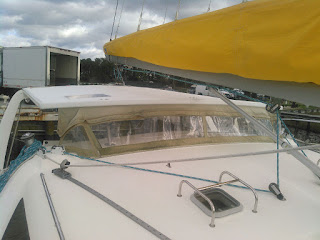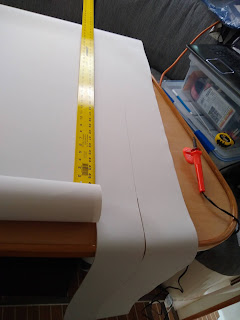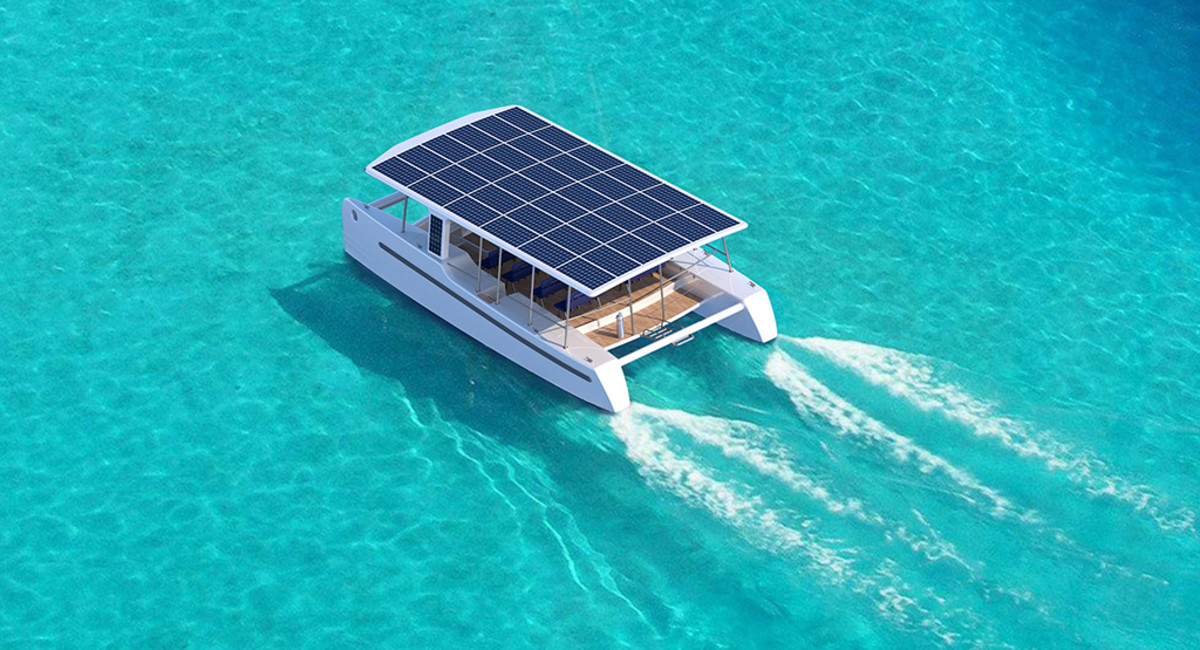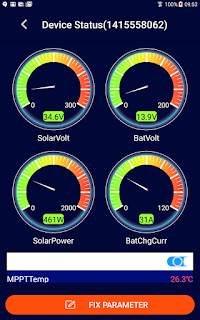Ice cream is often a special treat when you are on a boat. No matter where you are, on a warm day it is nice to have a cool treat to enjoy. But if your boat is like mine and your freezer doesn't really get cold enough to keep ice cream frozen, it is a rare treat that usually has to be purchased in a single-serving manner to be enjoyed at the time of purchase. This isn't really a problem with my boat freezer, just a limitation of how a low power consumption 12 volt cold plate style boat refrigerator/freezer works.
Many people, in order to provide more freezer space for a long trip or just to keep things colder turn to portable refrigerator freezers. These units often look like a cooler or ice chest, but inside they contain a small compressor driven refrigerator plate that usually runs on 12 to 24 volts DC. The best units are well insulated, can maintain temperatures below 0 degrees Fahrenheit (-17.8C) and don't use a lot of power. Of course the down side is the best of these also cost $800 or more for something the size of a medium size insulated cooler.
Of course I'm...um...lets say thrifty...and the price of these coolers was a non-starter for me. Being stuck at the boat in the middle of this Covid19 pandemic, a better freezer option became a bit more important. A better freezer would allow me to make fewer trips to the store as well as pre-chill items before adding them to my regular freezer (adding warm items to a cold plate fridge or freezer warms the items near them and is a potential food safety issue). After doing a bit of looking, I found there were several other options for small compressor driven coolers at a much lower price point (from $200 to $300) and would run on 12 volts DC. Of course, the question is how much "worse" are these than the much more expensive units? Will they actually keep sub-freezing temperatures? Will they use way too much power for use on a boat? I looked through the reviews and finally chose one to give a try.

The unit I chose was the Joy Tutus 26 quart portable refrigerator. I chose this unit because it claimed to be able to go to -7.6 degrees F, had a reasonable size with no handles that stick out so it would fit where I wanted to put it, claimed to hold reasonable temperatures for a while even with power disconnected, and had a company that at least had a web site and email addresses available (other than through Amazon) in case there were any warranty related issues. It was ordered through Amazon and arrived on time with no noticeable damage, although the driver apparently didn't see the right-side-up logo as it was sitting upside down (so, I had to turn it right side up and let it sit for 12 hours to make sure any compressor oil drained back to the compressor before startup). They claim the unit can run at up to a 30 or 35 degree angle, which should be more than sufficient for any boat or road trips taken with it.
The unit has a plastic exterior with non-skid feet and nothing but the 90 degree angle plug that sticks out to get hung up on anything (of course you need to make sure to not block the air louvers so it doesn't overheat). The "buttons" are a touch-sensitive plastic panel that acts similarly to a smartphone touchscreen (doesn't appear to be mechanical). Inside the cooler, the bottom pan is plastic and the side walls are painted metal and contain the cooling (evaporator) coils that seem to wrap all the way around the sides of the cooling chamber. A half-gallon milk jug does fit standing upright inside the chamber. The lid is also plastic with a foam rubber seal around the edge and uses magnets to hold the lid closed. Unfortunately, the molding of the plastic lid may have resulted in a little bit of a bow and, with the seal in the lid having a tight tolerance, it leaves a very slight gap for about two inches in the front center of the lid (the seal failure is apparent as ice builds up at that location when in use as a freezer). Overall, for a relatively cheap cooler, the fit and finish aren't too bad other than the door seal. The unit comes with a 12/24 volt cigarette socket style power cord for direct DC operation and a "power brick" style transformer (like many laptops) so it can be used with 110/220 volt AC sources.
Operation is pretty straight forward. Touching the on/off icon on the panel for 3 seconds turns the unit on. The display shows the current temperature inside the unit. Pressing the (+) or (-) buttons adjusts the temperature, pressing the setting (gear) button switches between Max and Eco modes. If you press the setting and (+) at the same time for 3 seconds, the display switches the display between Fahrenheit and Celsius temperature display (but there is no indication on the display as to which way it is set). After a minute or so with no buttons pressed, the touchscreen locks to prevent accidental adjustment or power off. To unlock, you have to press the setting button for 3 seconds. The unit remembers the last setting and will resume where it left off after a power interruption (tested by unplugging for 2 hours).
After turning the unit on, the display read 70 degrees. I set the unit for -8F in Eco mode and the display read 24 degrees in about 20 minutes, which is in-line with their claims for cooling (with the chamber empty). After another 15 minutes it read 12 degrees. At this point I placed a pre-frozen (~20F) half-gallon milk jug that was filled half-way with water into the unit. I noted that the thermometer read 28 F at this time. After an hour from the initial turn on (with the pre-frozen jug now inside) the display read -3F and the inside thermometer was around 10F. The unit didn't seem to get much colder according to the display over the next 40 minutes (the thermometer temperature did drop by a few degrees), so I switched it from Eco to Max mode. It did eventually reach the displayed temperature of -8F, but it took a while and I honestly don't know the exact timing as I was only checking on it every 30 minutes to an hour at that point.
 |
Freezer holding 1/2 gallon milk jug and making
ice. You can see the lid seal issue as well.
|
For the power consumption tests, I used a KillAWatt meter and the AC adapter that came with the unit as I don't have any convenient way to measure power consumption over time using the direct DC chord. As a result, the following numbers should be higher than actual performance if connected directly to a DC source due to the inherent losses in converting power from 120v AC to 12v DC. After the one test getting it to go to it's maximum cooling setting of -8F for a short period, most of the rest of the testing used settings between -1 and -3F. The only things inside the cooler were a small, simple, refrigerator thermometer and a half gallon milk jug filled half-way with water (ice). I kept the ambient temperature in the boat between 76 and 79F for the tests.
It has two power consumption profiles, MAX and ECO. From what I can tell, ECO just runs the compressor at a slower speed...and in the grand scheme of things doesn't appear to be much more economical (I suspect it is actually less but did not run many tests in both modes)...it just limits the max power it can consume at any one point in time (I assume it runs longer to reach/maintain a given temperature).
In MAX mode, I saw power usage when the compressor was running between 37 and 57 watts with the large majority of that between 38 and 42 watts. If you assume no loss in the transformer, that max range would be 3 to 4.75 amps at 12 v DC nominal. So, actual DC usage would again likely be less.
In ECO mode, I saw power usage between 35 and 42 watts with the majority between 30 and 35 watts. Again converting to 12v DC and assuming no loss, that would be between 2.75 and 3.5 amps.
Over a 72 hour and 24 minute period, the KillAWatt reported 1.89 kw of power used from a point where I turned the cooler on after it was at room temperature of 77F, set it for -3F in Max mode and placed the frozen jug of water in it. During this time I made ice using two regular refrigerator ice trays 3 times and checked the internal thermometer readings twice a day and noted any differences between what the display read and what the thermometer said. I figure this activity would roughly equate to normal usage of a freezer. 1890 watts over 72.4 hours is 26.1 watt/hours. At 12.5vdc (~12v nominal in ~80% charged state) that would be 2.09 amp/hours or around 50.2 amps per day as a freezer. I assume power consumption would be less if being used at refrigerator temperatures.
If I were to take a guess, I'd say that the power transformer brick is probably in the 80% efficient range...so the 12v DC numbers above would make for a very conservative over estimation of actual power used when directly connected to a DC source. Unfortunately, I just don't have the means to run this test using the direct DC connection.
The last test I ran was to see how long it would keep contents cool without power. So, when the cooler was reading -1F and the internal temperature was reading 5F, I placed the frozen jug of water and thermometer in the cooler, let it sit for a few minutes to stabilize, and then turned it off. I then turned it back on momentarily after an hour and the display claimed the temperature had jumped to 24F. Another hour later, I checked again and it claimed the temperature was 29F. Another 45 minutes later, I checked again and it was up to 34F. At this point I opened up the cooler to check the thermometer and it read 42F. Not the 10 hours from 0 to 34 that the original listing stated, even when having the frozen block of ice in the milk jug helping out. The initial jump may have been related to opening the cooler when putting the ice jug into the cooler and the fact the ice jug was stored in my boat freezer at 18F...but the rise still seems faster than it should, again indicating the insulation isn't optimal.
So, from an energy use standpoint, this portable refrigerator/freezer doesn't seem bad. Yes, it may be a bit higher than the really expensive ones, but it meets my needs quite well.
Now, didn't I mention ice cream? Well, I did perform an ice cream test. After the initial testing, I plugged the unit directly into one of the boats new DC sockets and set the refrigerator to -2F. I bought a half-gallon (OK, 3 pints...since you can't get an actual half gallon of cheap ice cream these days) of house brand rocky road for the final test. Over the course of the next week or so, I had ice cream as desert after dinner. The ice I made for drinks was the other item normally in this unit. In my regular boat refrigerator, if you put ice cream in the freezer it wold be OK the first evening, soft serve the second evening, and a milk shake by the 3rd. With this unit, the ice cream remained frozen and at a serving temperature of about 4 degrees F over the course of a week.
Other observations about the unit. So far it seems quiet. I can just hear it if it is the only thing running on the boat. But if there is any other ambient noise, it drowns out the quiet hum of the compressor. It sits just outside the always open door to my berth and I cannot hear it at all inside the berth. That makes it quite a bit less noisy than the small bar refrigerators like you usually find in hotel rooms. When acting as a freezer, some condensation does occur on the sides and bottom of the unit, so the insulation isn't perfect. As previously mentioned, the lid seal seems to have a very small leak right at the opening handle notch as ice slowly develops there. I notice that when I place items in the lower left corner of the chamber (as viewed looking down from the front of the unit) the displayed temperature tends to quickly jump, so I believe this is the general location of the internal thermometer.
And speaking of the thermometer...at the temperatures I was testing, I found the internal chamber temperature measured with a thermometer at roughly the center of the chamber to be about 5 to 7 degrees higher than what was displayed by the unit. This is not unexpected and, as anyone that has ever used a refrigerator that doesn't have a fan to circulate the air will know, is quite normal.
Is the unit as good as the much more expensive Engel or Dometic units, probably not. But it does meet my needs and at a much more wallet friendly price. Longevity is still a question, but if it lasts a while, I think it will make a nice addition to the boat. I do really like having the ability to pre-chill leftovers before putting them in the boat freezer, having plenty of ice for drinks, and of course ice cream on board. Now that I can make ice and store ice cream, I might have to give one of those ice cream maker balls a try.
































